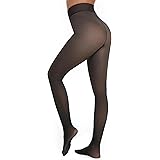We’ve all been there: scrolling through social media, a new trend flashes across the screen, and suddenly that ‘must-have’ item seems absolutely essential for a single outfit photo. It arrives quickly, costs surprisingly little, and then, almost as fast as it appeared in our feed, it’s relegated to the back of the closet, or worse, to the donation pile after just a few wears. This fleeting desire, perfectly captured in the accompanying video, is the essence of the fast fashion phenomenon – a sprawling, multi-billion-dollar industry built on rapid production, ephemeral trends, and often, an alarming disregard for its true costs.
The video vividly illustrates the colossal scale of this industry, valued at an astonishing $100 billion and projected to hit $133 billion by 2026. This isn’t just about fleeting trends; it’s a systemic acceleration of consumption, producing over 100 billion garments globally each year. That’s nearly 14 items for every person on the planet, an output that far outpaces genuine need or practical utility. Yet, the convenience and allure of ‘newness’ keep the engine of fast fashion relentlessly churning.
The Relentless Engine of Fast Fashion: Scale and Profound Impact
Fast fashion brands like Zara, H&M, and Forever 21 operate on a model that defies traditional seasonal cycles. Instead of two major collections a year, they innovate with 52 “micro-seasons.” This aggressive production cadence, as highlighted by Lily Moskowitz, floods the market with an unprecedented volume of clothing, transforming fashion from an art of enduring style into a disposable commodity.
Consider the analogy of a high-speed conveyor belt: new items are constantly pushed forward, while older ones are quickly shunted off to make room. This relentless pace creates an oversupply of products we scarcely need, generating substantial waste and exerting immense pressure on both planetary resources and human dignity.
A Torrent of Textile Waste
The environmental repercussions of this rapid turnover are stark. A staggering 33% of all fast fashion clothing ends up in landfills within a year of purchase. The EPA Office of Solid Waste reports that Americans alone dispose of over 68 pounds of clothing and textiles per person annually. This isn’t just a matter of overflowing landfills; textile waste, particularly synthetics, can take hundreds of years to decompose, releasing harmful greenhouse gases in the process.
Managing this post-consumer waste is a global challenge. Developing nations, often lacking the infrastructure, become unwitting dumping grounds for the Western world’s discarded garments, turning what should be a local issue into a global crisis of environmental justice.
Environmental Fallout: Carbon, Water, and Chemical Contamination
Beyond physical waste, the fast fashion industry is a behemoth of pollution. It’s estimated to account for 8 to 10% of total global carbon emissions – a figure surpassing the combined emissions of international flights and maritime shipping. Furthermore, it consumes a staggering 20% of global water waste, primarily due to water-intensive processes like cotton cultivation and textile dyeing.
The environmental damage extends to chemical contamination. As the video notes, manufacturing synthetic materials like nylon, polyester, polyurethane, and acrylic often involves highly harmful chemicals. Azo dyes, inexpensive compounds used to achieve vibrant colors, are particularly concerning. These chemicals, readily absorbed by the skin through constant contact with clothing, can be carcinogenic. Companies often fail to disclose the presence of such dangerous substances, leaving consumers in the dark about the silent saboteurs lurking in their wardrobes.
The Social Fabric Undone: Ethical Implications of Rapid Production
While environmental impact garners significant attention, the human cost of fast fashion is equally profound. The drive for cheap, quick production often translates into exploitative working conditions in developing countries. Low wages, extended working hours, unsafe factory environments, and a general lack of labor rights are pervasive issues within the industry’s sprawling supply chains.
Workers become, in essence, cogs in a relentless machine, pressured to produce at breakneck speeds for meager compensation. This systemic exploitation prevents sustainable growth in their communities and perpetuates cycles of poverty, highlighting the deep ethical dilemma at the heart of our disposable fashion culture.
The Digital Catalyst: How Social Media Fuels Fast Fashion’s Fire
The surge of fast fashion has not occurred in a vacuum; it’s intrinsically linked to the rise of social media platforms like Instagram and TikTok. As Danielle Testa explains, these platforms have ignited a relentless desire for constantly changing wardrobes. Influencer culture, where daily new outfits are showcased, creates a powerful stigma around ‘outfit repeating,’ fostering a perception that clothing should be worn once and then discarded.
Pre-digital, trend cycles moved slowly, allowing fashion ideas to gradually disseminate. Conversely, social media compresses these cycles into a daily phenomenon. This digital acceleration means that clothing becomes less about practicality or enduring style and more about instantaneous trends, driving consumers to buy more for the sake of being ‘fashionable’ rather than finding items they genuinely need or will cherish.
Algorithmic Allure: Shein and the Data-Driven Trend Machine
Online retailers, particularly platforms like Shein, have mastered the art of leveraging digital data. Surpassing giants like H&M and Zara in US fast fashion sales by 2017, Shein’s business model is a testament to the power of AI and data analytics. Their AI engine acts like an oracle of ephemeral desires, quickly identifying emerging trends and shifts in consumer interest.
This data-driven approach allows their supply chain to react in real-time, rapidly producing garments modeled directly after celebrity outfits or micro-trends spotted online. This efficiency not only lowers operating costs but also cleverly encourages clients to buy more, continuously feeding the hunger for ‘what’s new now’ and reinforcing the disposability of clothing.
Decelerating the Cycle: Embracing Slow Fashion and Conscious Consumption
In stark contrast to the unsustainable trajectory of fast fashion, a growing movement champions ‘slow fashion.’ Lily Moskowitz defines slow fashion as an investment in durable products—garments that transcend single dinner parties or fleeting trends. It’s about selecting pieces that offer versatility and longevity, items that can be worn in multiple ways over many years.
Consider slow fashion as building a curated wardrobe rather than collecting a disposable pile. It prioritizes quality over quantity, ethical production over exploitative practices, and timelessness over transient trends. This paradigm shift requires a more deliberate, thoughtful approach to consumption.
Practical Pathways to Sustainable Wardrobes
Embracing a more sustainable approach to fashion doesn’t always necessitate buying expensive, newly produced ethical garments. Accessible alternatives include thrifting clothes, which diverts textiles from landfills and extends their lifespan. Organizing clothes swaps with friends transforms old items into new treasures, fostering a community-driven approach to fashion.
For those able to invest, brands like Reformation and Patagonia exemplify sustainable fashion. They commit to protecting workers’ rights and minimizing environmental impact through responsible sourcing, transparent supply chains, and durable designs. Repairing beloved garments, repurposing old textiles, and even renting for special occasions further contribute to a circular economy in fashion.
Navigating the Accessibility Divide in Sustainable Fashion
It is crucial to acknowledge that the higher cost of many newly produced sustainable garments can create an accessibility barrier. For many low-income communities, thrifting and clothes swapping are not just ethical choices but often the only viable alternatives to cheap, new, unsustainable clothing. This disparity underscores the need for broader systemic changes, including policy support for ethical manufacturing and greater affordability for sustainable options.
However, consumer demand remains a powerful force in the supply-and-demand dynamic. As Lily Moskowitz wisely advises, where you put your money sends a clear message to the industry about consumer preferences. Researching brands is paramount, and resources like goodonyou.com provide valuable ratings on labor practices, material sourcing, water usage, and energy waste. Investing in a piece you truly love and value, rather than succumbing to the fleeting whims of social media, contributes less to your individual waste footprint and actively champions a more responsible fashion future, paving the way for wider industry adoption of ethical and sustainable fashion principles.











